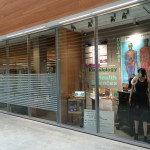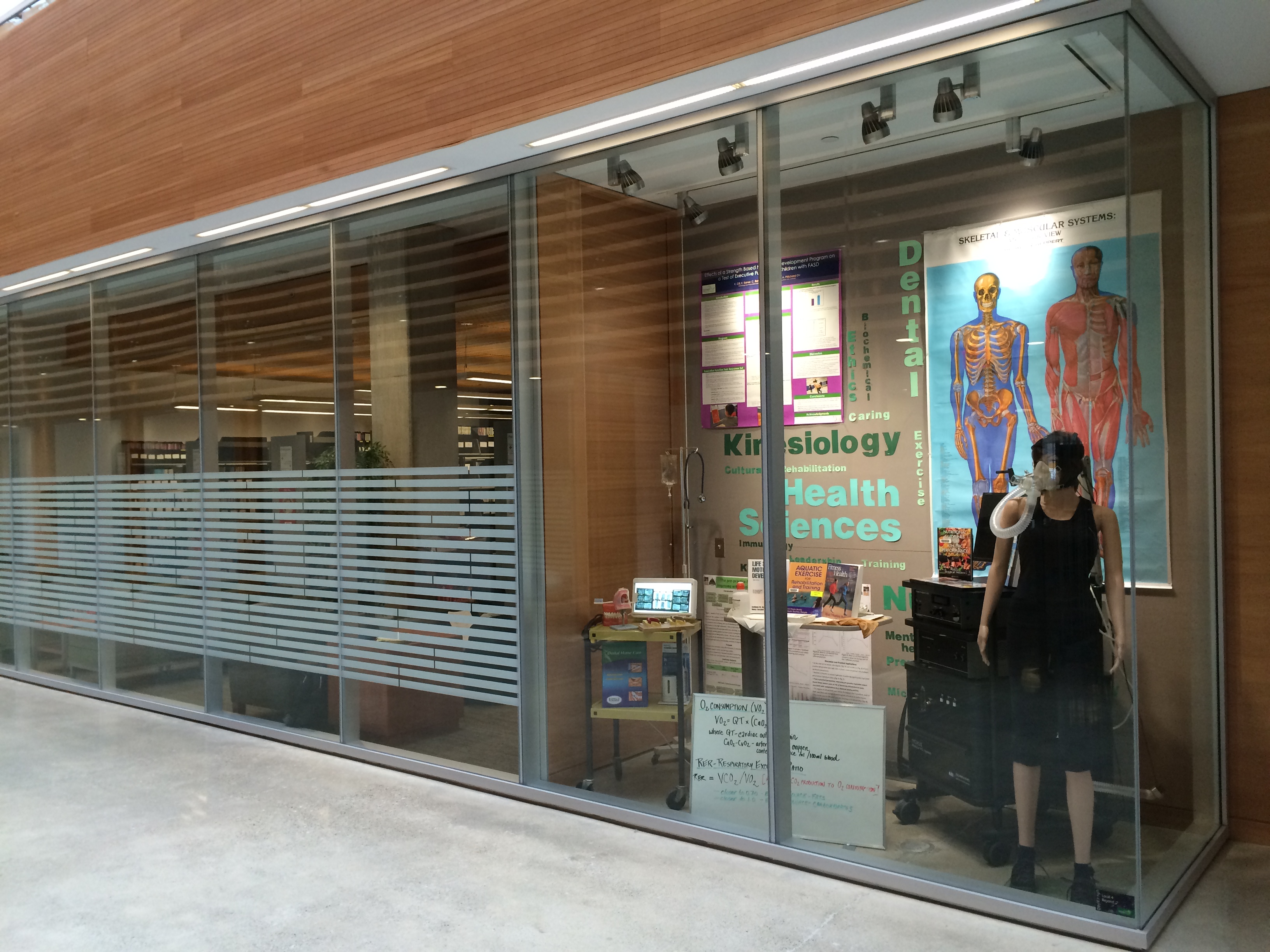 The model in the Chilliwack library’s display cabinet is showing off how easy it is to use a metabolic cart to estimate the amount of oxygen used by tissues during exercise or at rest. By measuring the amount of oxygen consumed by our cells, we can estimate the amount of energy produced through cellular respiration. Dressed up in exercise gear, the mannequin gets her oxygen consumption (VO2) tested when her body is resting and then again during exercise. We can see how much more oxygen is used by the cells during exercise and also test the maximum amount of oxygen that can be consumed by the cells, which is a measure of aerobic capacity.
The model in the Chilliwack library’s display cabinet is showing off how easy it is to use a metabolic cart to estimate the amount of oxygen used by tissues during exercise or at rest. By measuring the amount of oxygen consumed by our cells, we can estimate the amount of energy produced through cellular respiration. Dressed up in exercise gear, the mannequin gets her oxygen consumption (VO2) tested when her body is resting and then again during exercise. We can see how much more oxygen is used by the cells during exercise and also test the maximum amount of oxygen that can be consumed by the cells, which is a measure of aerobic capacity.
Aerobic capacity mainly genetic
The maximal oxygen consumption in tissues is largely genetically determined, but it is can also improve with endurance training. The VO2 max test is commonly used to test athletes’ aerobic capacity and to track how much they have improved over time. The average sedentary individual has a VO2 max of 25-35 (this is how much oxygen their cells are able to use in one minute), during a walking test on a treadmill, while a frail, elderly person has a VO2 max of 10-20 mL/kg/min. The highest VO2 max ever recorded is a Scandinavian cross-country skier who scored 93. VO2 max declines significantly with age, starting at 25-30 years old. Fat composition and muscle mass have little influence on VO2 performance. It’s aerobic training that can make a difference.
Dogs, our aerobic masters
To compare us to our furry friends, an elite distance runner may have a VO2 max of approximately 80 mL/kg/min, whereas sled dogs have a far greater endurance capacity, reaching levels of up to 300 mL/kg/min.
Nursing and dental aspects to display
The health sciences display at UFV’s Chilliwack campus library includes elements of nursing, kinesiology and dental instruction, including library resources on health-related topics and some neat dental X-Rays. All of the library materials in the display case are available to take home. Ask a staff member and she will get it out of the display cabinet for you.
For more information, contact Lisa Morry at lisa.morry@ufv.ca
03/09/2015

